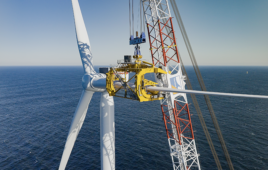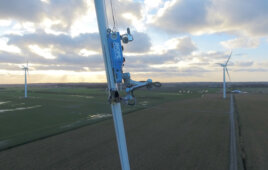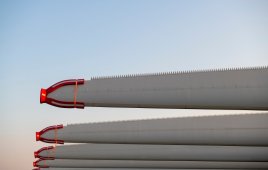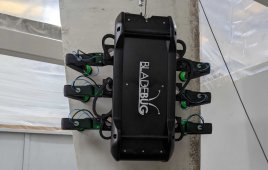Bladeskyn, a blade surfacing material for wind turbines, from Blade Dynamics in the U.K. and soon of New Orleans, is said to deliver new levels of coating protection, using fluoropolymers in an innovative film application format. The company says its advantages include 20-year performance, assured quality, and lowest lifetime cost.
 The developer says the coating lasts far longer than traditional paint and gelcoat. The chemistry and nanotechnology has been developed to meet the needs of modern wind turbine blades and has proven longevity in demanding architectural tasks. Its performance advantages include absolute UV stability, minimal dirt pickup, excellent abrasion resistance, and low reflectivity.
The developer says the coating lasts far longer than traditional paint and gelcoat. The chemistry and nanotechnology has been developed to meet the needs of modern wind turbine blades and has proven longevity in demanding architectural tasks. Its performance advantages include absolute UV stability, minimal dirt pickup, excellent abrasion resistance, and low reflectivity.
The company says Bladeskyn resolves the costly processing and quality issues associated with alternatives. Trained operatives can apply the coating quickly, easily, and with little equipment. There are no sprays, solvents, or mixing so the surface quality is not at risk from human error and the working environment is far safer. The company says clients will receive assured surface properties, a repeatable process, and a simple and clean application. The following tables from Blade Dynamics provide a few comparisons with competing and conventional blade coatings.
Blade Dynamics
Filed Under: Blades





I seem to recall that Yvonne Wilke, Volkmar Stenzel and Manfred Peschka of the Fraunhofer Institute have developed a “shark skin” nano-coating for wind turbine blades that is supposed to decrease drag; the trouble is that it needs to be re-applied after five years. It would be useful to know whether the Bladeskyn product and the “shark-skin” coating are compatible.